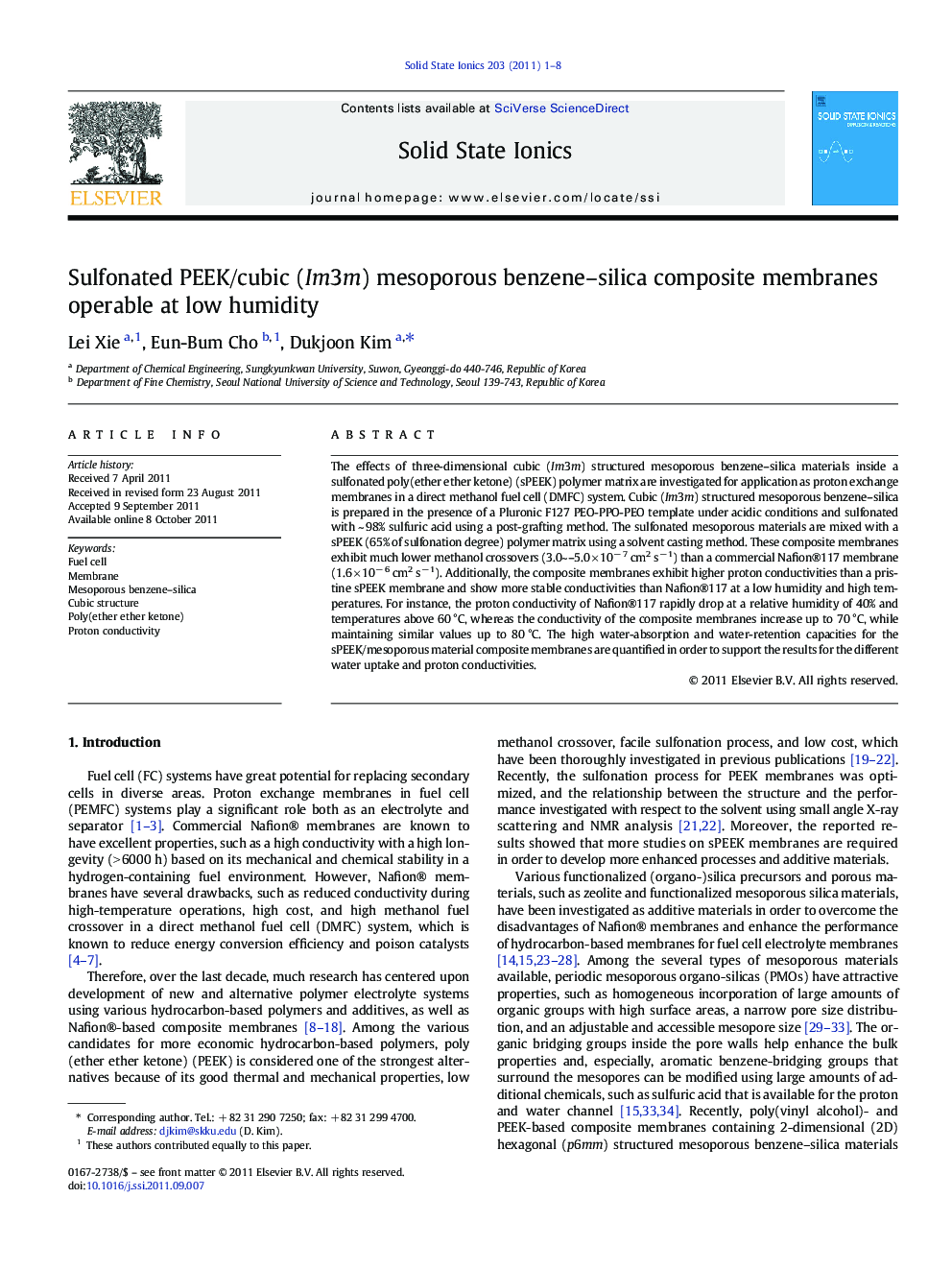| Article ID | Journal | Published Year | Pages | File Type |
|---|---|---|---|---|
| 1294841 | Solid State Ionics | 2011 | 8 Pages |
The effects of three-dimensional cubic (Im3m) structured mesoporous benzene–silica materials inside a sulfonated poly(ether ether ketone) (sPEEK) polymer matrix are investigated for application as proton exchange membranes in a direct methanol fuel cell (DMFC) system. Cubic (Im3m) structured mesoporous benzene–silica is prepared in the presence of a Pluronic F127 PEO-PPO-PEO template under acidic conditions and sulfonated with ~ 98% sulfuric acid using a post-grafting method. The sulfonated mesoporous materials are mixed with a sPEEK (65% of sulfonation degree) polymer matrix using a solvent casting method. These composite membranes exhibit much lower methanol crossovers (3.0~–5.0 × 10− 7 cm2 s− 1) than a commercial Nafion®117 membrane (1.6 × 10− 6 cm2 s− 1). Additionally, the composite membranes exhibit higher proton conductivities than a pristine sPEEK membrane and show more stable conductivities than Nafion®117 at a low humidity and high temperatures. For instance, the proton conductivity of Nafion®117 rapidly drop at a relative humidity of 40% and temperatures above 60 °C, whereas the conductivity of the composite membranes increase up to 70 °C, while maintaining similar values up to 80 °C. The high water-absorption and water-retention capacities for the sPEEK/mesoporous material composite membranes are quantified in order to support the results for the different water uptake and proton conductivities.
Graphical abstractsPEEK-based composite membranes containing sulfonated 3D cubic (Im3m) mesoporous benzene–silica shows relative stable proton conductivity at low humidity condition of 40% as well as very low methanol crossover.Figure optionsDownload full-size imageDownload as PowerPoint slideHighlights► Sulfonated 3D cubic mesoporous benzene–silica was prepared to control conductivity. ► sPEEK/benzene–silica composite membrane exhibited very low methanol crossover. ► High proton conductivity was maintained up to 80 °C at a low humidity of 40%.
